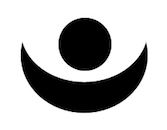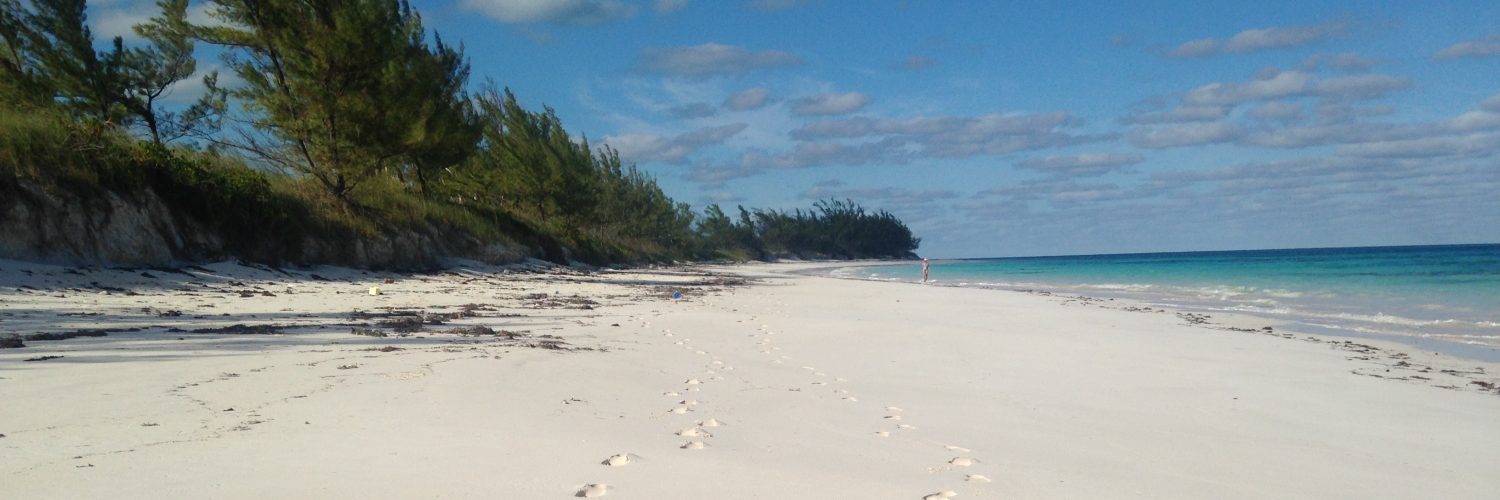In our fast-paced world, rest has become a crucial aspect of maintaining our mental and physical well-being. While sleep is the most well-known form of rest, there are other types that are equally essential for our overall health. Understanding and incorporating the seven types of rest into our daily lives can help us recharge and stay focused, leading to increased sense of achievement and well-being. In this article, we’ll explore these seven types of rest and provide tips for incorporating them into your routine.
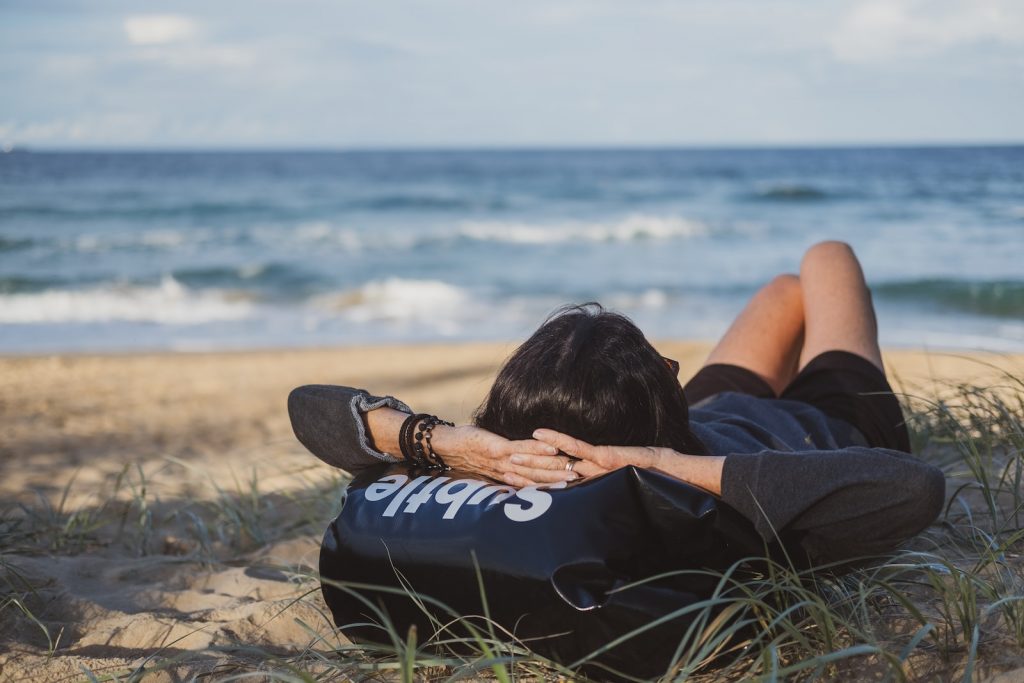
Physical Rest
Physical rest is the most familiar form of rest, and it’s often associated with sleep. However, it can also include other activities that allow our muscles and joints to recover from the strains and stresses of daily life. Examples include stretching, yoga, and massage. Incorporating physical rest into your day can reduce fatigue, improve muscle recovery, and lower the risk of injury.
Mental Rest
Mental rest is essential for reducing brain fog and maintaining focus throughout the day. This type of rest involves taking breaks from cognitive tasks, such as problem-solving, decision-making, and creative thinking. Meditation, mindfulness exercises, and stepping away from screens can all help in providing mental rest. Aim for periodic short breaks during the day and create a routine that allows your mind to recharge regularly. Taking a mindful tea break or a mindful moment outside can really make a difference.
Emotional Rest
Emotional rest focuses on processing and expressing our feelings to maintain emotional balance. This type of rest can be achieved through journaling, therapy, or simply having open conversations with a trusted friend or family member. By addressing our emotions and allowing ourselves to be vulnerable, we can experience relief and a sense of emotional well-being. It’s often said in mindfulness practice; what we feel, we heal.
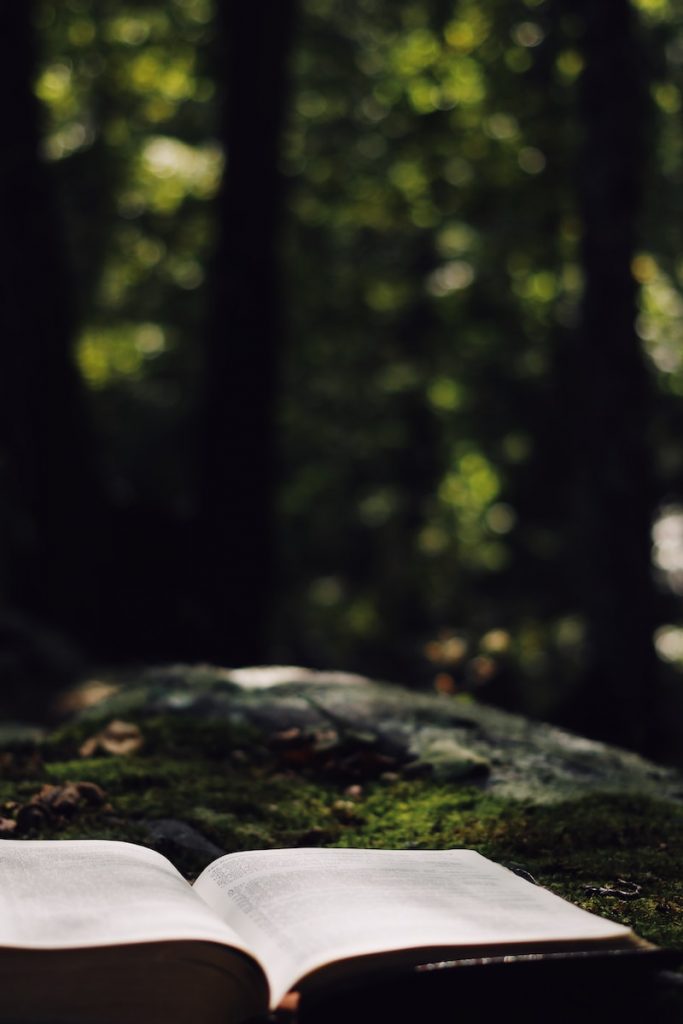
Sensory Rest
Sensory rest is essential for counteracting the constant bombardment of stimuli from our environment, such as noise, light, and screen time. To practice sensory rest, create a calm and quiet space where you can retreat and unplug. Activities like reading a book, taking a walk in nature, or closing your eyes for a few minutes can all help to reduce sensory overload and provide restorative benefits. Earplugs can also be really valuable to increase sensory rest when you share space with others and it’s harder to find quiet.
Social Rest
Social rest is the act of finding balance between socialising and solitude. This type of rest can involve spending time with people who recharge your energy or seeking out moments of solitude to regroup and reflect. Identify which relationships in your life provide support and comfort, and make an effort to prioritise those connections.
Creative Rest
Creative rest is the process of rejuvenating our creative energies and nurturing our imagination. It involves stepping away from our usual creative outlets and engaging in activities that inspire and invigorate us. Visiting an art gallery, attending a concert, or exploring a new environment can all help to stimulate our creativity and provide the rest our minds need to stay innovative.
Spiritual Rest
Spiritual rest is the practice of connecting with a higher power, whether that is through religion, spirituality, or a sense of purpose in life. This type of rest can help us find meaning and foster a sense of inner peace. Spiritual rest can be achieved through prayer, meditation, or participating in religious or spiritual activities that resonate with your beliefs.
Incorporating the seven types of rest into our daily lives can help us maintain a balanced and healthy lifestyle. By understanding the different ways we can rest, we can address our individual needs and prioritise self-care. So, take a moment to assess which types of rest are missing from your life and begin to create a well-rounded rest routine that supports your overall well-being.
Rest doesn’t need to be another thing that’s added to your ‘to do’ list. Once you identify which types of rest you need more of, try adding micro-doses of rest into your day as often as possible. Leave yourself post-it note reminders, set alarms on your phone, add mini rest breaks to your calendar – whatever it takes to create the habit of healthy rest.
Join us at The Well Nest for regular workshops, classes and retreats to help you find rest and self-care.
Vegan & Sustainable Living Festival!
Exciting things are happening at Bishton Hall this month – join us for our first Vegan & Sustainable Living Festival! Come along and try some fantastic vegan street food, shop sustainably, discover amazing local makers and crafters and join me in the Wellbeing Tipi for some retail therapy, self-care therapies and workshops.

Main Marquee
We have so much going on at the Vegan & Sustainable Living Festival, it’s hard to know where to start!
On the lawn we have a large marquee housing around 30 vegan and sustainable living traders. Here you’ll find things such as candles, bath and body care, pies, Turkish food, jewellery, general stores, wood crafts, sauces and pickles, eco gifts, recycled and up cycled crafts, wines, doughnuts, preserves, flowers…the list goes on.
There is also a presentation area in the main marquee where you can hear traders talk about their sustainable projects, vegan living and see demonstrations and taste products. There will be a new speaker every hour on each day of the festival, including our very own Charles Hanson at 3 pm each day giving talks on antiques and buying sustainably.
Holistic Wellbeing Tipi
Take a walk around the grounds and you’ll find a magical Nordic Tipi housing the Yoga and Wellbeing area. Come and see me there for retail therapy, mini holistic treatments in the Tipi, sustainable themed workshops and a chance to win prizes.
You can shop all things yoga and meditation – mats, yoga blankets, yin pillows, blocks, carry straps, meditation cushions and eye pillows. A vast supply of incense and incense holders, diffuser oils, oil burners, bath and body care, mala beads, mandala cards, salt lamps, candles and gifts!
On offer during the festival will be mini holistic treatments such as hand massages and Indian head massage. Workshops on creating your own natural deodorant and aromatherapy body scrubs. There will also be Sound Baths to relax and unwind.
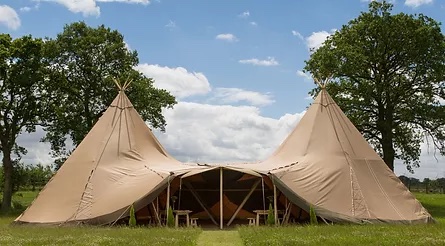
Artisan Courtyard and Street food
Come and visit our wonderful artisan courtyard of shops and makers:
The Quirky Emporium for sustainable furnishings, gifts, handmade candles and items for the garden.
Mercia Spirit Lab for tastings, artisan gin and whisky, cocktail masterclasses (!), gift vouchers and experience days.
LuvFelt for fabulous handcrafted works of art, clothing and accessories, bird house pods, cards and tea towels.
S&P Watercolours for wonderful works of art inspired by the natural world as well as cards, mugs, cushions and tea towels.
Earth & Fire Ceramics for classes and workshops in pottery and throwing techniques as well as handmade works of art, sculpture and gifts.
Ivy House for a huge range of homewares and gifts, cards and handmade candles.
Kate Bennett Fine Art Photography for wonderful landscape photography, inspirational and occasion cards and giftware.
For the vegan festival there will be street food from Nelly’s Delhi (gorgeous Indian food), No Baloney (vegan sausages), Where’s the Catch (vish and chips), Hugo’s Bar (ice cream, jacket potatoes, hot and cold drinks, milkshakes), stews and soups from Mercia Spirit Lab. Yum!!
Children’s Crafts
Did I mention there will be FREE children’s crafts all weekend? Wander over to our fabulous historic orangery and find Outdoor Answer offering children’s crafts throughout the weekend. Let your little ones try making seed bombs, making leaf pledges for Earth Day (Friday 22nd April) and connecting to nature. Bishton Hall has fabulous grounds including a Temple Garden, woodland and amazing historic trees – let their imaginations run wild.
Cannot wait to see you there!
Letting Go and Manifesting the New
Halloween isn’t just about costumes and sweets. Samhain, as the festival is traditionally known, is a wonderful time for acknowledging the past and letting go before calling in your hopes and dreams for the future.
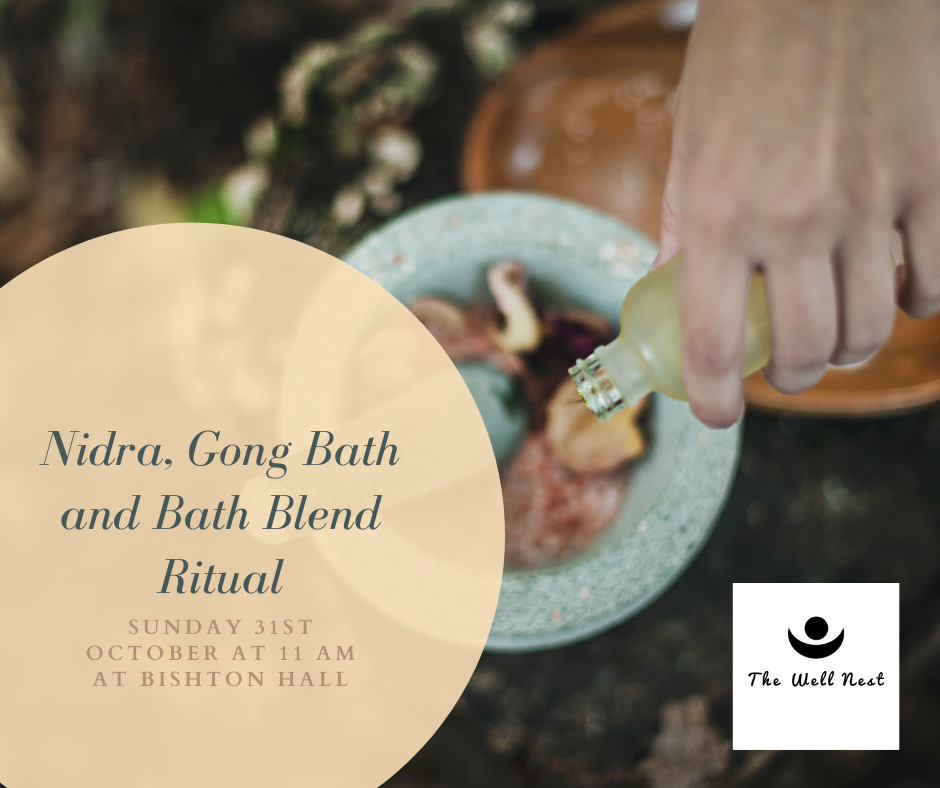
October’s unique workshop will bring together the best of the season and the energetic changes to give you a boost into the Autumn with a fresh outlook and high spirits. The workshops uses aromatherapy, sound waves and yogic sleep to help you relax deeply before calling your hopes into being.
Your body, mind and spirit all benefit from this practice of aroma, relaxation, meditation and sound therapy. It’s a complete package for renewal! This year, Samhain falls between the date at which Venus is closest to the earth (29th October) and a new moon (4th November) making it the perfect time to cleanse, release and turn our energy towards the new.
This workshop will be an opportunity to use ritual and relaxation to make the most of the spiritual and celestial energies available to make a new start. We will begin our workshop session by crafting a personal blend of bath salts, essential oils and natural ingredients to take away and use over the next 30 days to repeat our intentions for the future whilst practicing self-care. You will be encouraged to set intentions and affirmations for the future as you build your self care bath ritual blend.
We will then begin a yoga nidra session – deep relaxation bringing us to the cusp of sleep so that our consciousness becomes susceptible to creativity, intuition and release on a deeper level. This is a passive practice, so no physical postures are practiced – it is a guided visualisation and relaxation practice. Get comfortable under blankets and drift away.
We will then transition into a gong bath to let the sound waves wash over us, cleansing the mind and body and allowing us to start anew.
The focus of this workshop will be based around the energies available to us from the cosmos at this point in time:
Samhain/Halloween – a time of transition from the old to the new. A slowing down of one cycle and the beginning of another. Coming into a deep rest before calling our dreams and wishes into reality.
Venus – A focus on the heart chakra and self compassion. Looking deeply at our own happiness and how we gather and expend our personal resources. We will be able to utilise the divine feminine/shakti energy of the provider, nurturer and fierce protector to help manifest our goals
New moon – Heart chakra energy from the new moon helps us to align for a new beginning and cleanses us of whatever has just past or is no longer beneficial. This energy is a powerful force for helping us to let go.
Everybody will be able to create their own blends using salts, oils, plants, natural ingredients and the fruits of nature. You will take away the bath blend in a kilner jar to use at home several times as part of your own bathing, cleansing and intention setting ritual. You will also receive a free gift to take away.
Spaces are limited on this small, cozy workshop. All materials are provided…get yourself booked in!
Yoga Focus – What is Ashtanga Yoga?
If you’ve ever taken a vinyasa class with me, you will be familiar with a lot of the poses from the ashtanga lineage. Vinyasa yoga is essentially a free flowing version of ashtanga – anything goes. Ashtanga is itself quite the opposite; a set number of postures, in a set order…every time.
You may think this sounds a little restrictive and (gasp!) boring, but that is not the case with Ashtanga. There are so many poses and vinyasas (breath with movement) in and out of the poses, that boredom is the last thing on your mind. Lets take a closer look…

Historically speaking…
Ashtanga is a dynamic form of Hatha yoga that has its roots in the town of Mysore, south India. The ashtanga method is an ancient system of yoga that was taught by Vamana Rishi in the Yoga Kurunta. It is believed that the text was imparted to Sri T. Krishnamacharya in the early 1900’s by Guru Rama Mohan Brahmachari.
Ashtanga means ‘eight limbs’ as described by Patanjali (an Indian sage) in the Yoga Sutras (the Sutras are believed to have been written between the 2nd and 4th century CE). This text is the authority on the practice and true nature of yoga – the eight limbs must be practiced in order to realise our true potential, our true nature and transcend human suffering. Ashtanga embodies these eight limbs:
- Yamas (behavioural observances – things that we should do)
- Niyamas (behavioural restraints – things that we should not do)
- Asana (physical yoga postures)
- Pranayama (yogic breathwork to control the flow of our life force energy)
- Pratyahara (withdrawal of the senses)
- Dharana (concentration)
- Dhyana (meditation)
- Samadhi (liberation)
The practice that we know today as Ashtanga yoga was first developed, practiced and taught by the yogi Krishnamachrya in Mysore, India. A student of Krishnamacharya, Pattabhi Jois continued the work of sharing the ashtanga method throughout the world. Today the method is continued by Manju and Sharath Jois (son and grandson of Pattabhi respectively). Ashtanga yoga is therefore a lineage as well as a practice and encourages many dedicated, life-long practitioners throughout the world.
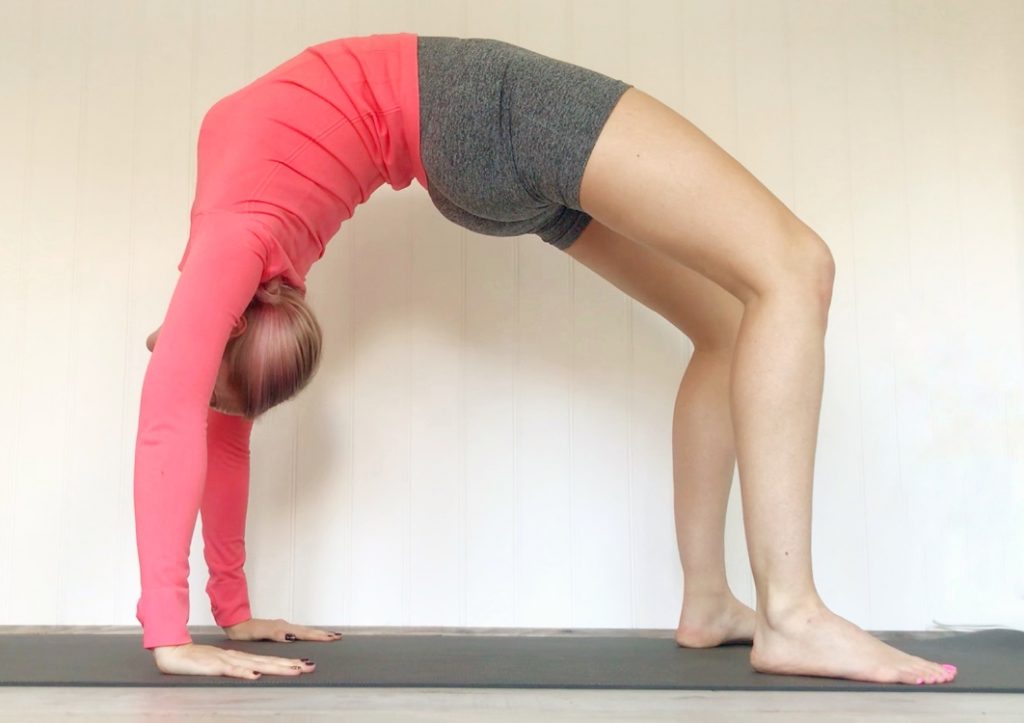
What to expect
Ashtanga yoga is taught in series’ of postures and each student of ashtanga practices the postures according to their own ability. Students are ‘given’ postures by the teacher and practice their sequence individually (although in classes with others) under the guidance of the teacher. Each student therefore is carrying out their individual practice, broadly the same as the other students and yet unique to them. More postures are added to the series as the student grows in strength and flexibility until completion of a series. The next series can then begin (phew!).
This individual approach to yoga (rather than being in a class where everybody is taught the same thing and follows the teacher through the class) is known as ‘Mysore style’ after the place it was originally taught by Krishnamachrya and Pattabhi Jois. Ashtanga can also be presented as a ‘led’ class in the style that we are familiar with, where everybody works through the poses at the same time guided by the teacher – this style is a great place to start your practice.
All students of ashtanga start by learning the postures of the Primary Series. This series is known as Yoga Chikitsa or yoga therapy. The aim is to loosen the body and free the practitioner from stiffness or weakness and allow them the freedom to practice fully. You will find hip opening, hamstring lengthening, spinal flexibility, strength and stamina in the Primary Series.

Is it for me?
Ashtanga yoga is a dynamic practice so you should be prepared to work hard. However, it isn’t yoga for the advanced only and it certainly isn’t reserved for the flexible. Ashtanga often has a reputation for rigidity, but the practice lends itself to variation and modification to suit the individual. Nobody starts an ashtanga practice able to ‘do’ all of the postures. There is work for everybody in this practice.
So what exactly will you find at an ashtanga class?
Structure – the Primary Series (where we all start) consists of sun salutations, fundamental asanas (postures), standing sequence, seated sequence, backbends and a closing sequence. You will learn to know what to expect, but no two days are the same for your body.
Sweat – the practice of ashtanga builds heat in the body. It can be strenuous and definitely raises the heart rate.
Breath-work – each movement in ashtanga is accompanied by the breath. We use the breath to move in and out of poses or hold poses for a breath count. This is the vinyasa – breath with movement.
Meditation – ashtanga, though a strong dynamic practice, becomes a moving meditation due to the structure, breath and counted nature of the vinyasas. You leave the mind behind and crowd out thoughts with the practice.
Accomplishment – The yoga journey is never about achieving postures but about moving beyond the ego to reside in peace; the true nature of the self. Due to the dynamic nature of ashtanga, you will also feel like you have achieved great things. Your body and mind will change with a consistent practice.
Ashtanga is a great place to advance your practice. If you’ve been a yogi for a few years and have felt the magic of yoga, the ashtanga method might be for you. Step outside the comfort zone, try new things and surprise yourself; find strength in backbends, find balance in headstand, find calm in deep twists.
Join me twice a month on Wednesday evenings to get to know the ashtanga method. Master the mind and the body and feel the endorphins flow!
Om shanti shanti shanti
Your Practice, Our Community: Lockdown 2.0
Well we were expecting it weren’t we? But that said, lockdown still comes as a blow to most of us (myself included). But, I’m still here helping you to stay motivated, lifted and encouraged to keep practicing yoga and meditation. We have a great community of yogis and meditators, so lets get through this together!
Back online each week with the following:
Weekly – ’10 minutes a day’ mindfulness practice uploaded to Youtube. Donation based class; pay what you can/wish by PayPalMe
Wednesdays 12 pm – Yin Yang Yoga, £5
Thursdays 6 pm – Vinyasa Yoga, £5
Fridays 10 am – Yin Yoga, £5
You can find out more about the styles of yoga here.

Classes will run when minimum participant numbers (3 people) have been reached, so please book early if you’d like to practice. There is no limit on the number of people who can join, so spread the word to anyone else who needs a little pick-me-up during lockdown.
If you have any issues with booking, please let me know [email protected]
See you online!
Namaste
Shamanism for Modern Life
Modern life is difficult – we all know this! Sometimes it’s hard to find exactly why it appears to be such a struggle – are we doing it wrong? Are other people finding it much more easy to navigate the challenges of modern life than we are?
The answer to both of these questions is largely no. Life is an art not a science – we aren’t doing it wrong and others aren’t having more success at it than we are (although social media and the art of ‘appearing happy’ would have us believe otherwise).
But…we do know that there are a lot of things we could do to help ourselves. Exercise, meditation, relaxation, therapy…all these things can help us sort through the difficulties of life and find more ease. Shamanism can help us find balance and ease with life too.
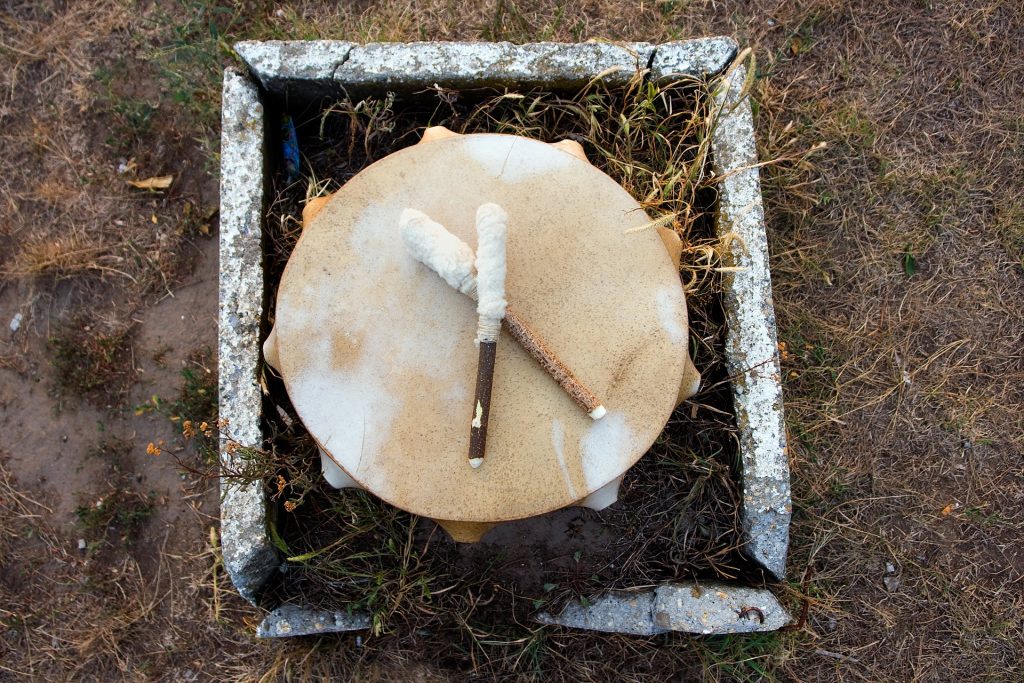
What is Shamanism?
Shamanism is one of the oldest systems of finding balance, harmony and wholeness that humans across the globe have relied upon for healing and wellbeing. Shamanism seeks connection to nature, to all of life, in order to find our balance and wellness.
Humans are animals, but with the development of modern society and cultural progression, we have lost touch with our foundations as creatures of the earth and have become largely separate. Living separate lives, looking after ourselves, losing the sense of community and balance with nature that is so fundamental to wellbeing.
There is a reason why so many wellbeing techniques rely on balance: re-aligning energy flows, using essential oils to correct imbalance, seeking inner stability of mind through finding balance between calmness and productivity. Modern life has thrown us out of balance. We live inside manufactured environments, surrounded by electronic devices, eating processed food and trying to protect our egos. This is not the natural life of an animal. It’s no wonder we desperately need help with our wellbeing.
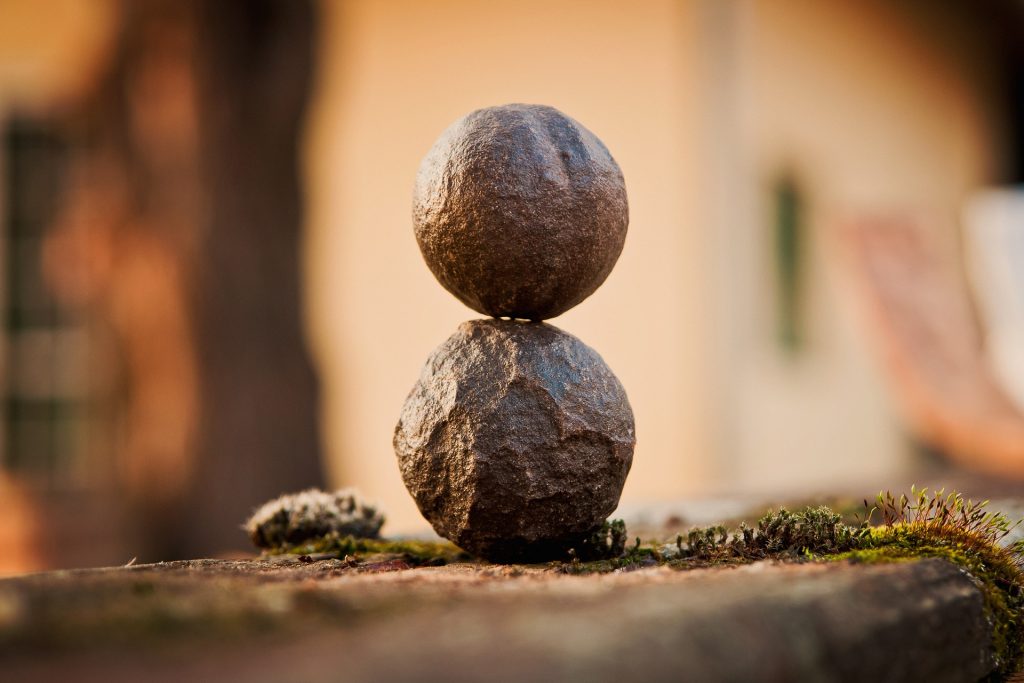
Why is Shamanism Relevant and Useful Now?
Shamanism is concerned with reigniting our nature connection. Re-discovering our place within the landscape of the earth and all of the life-forms within it. This is so relevant in today’s world where we desperately want to find that balance for ourselves, but with equal vigour, want to protect our precious environment so the earth can heal too.
Shamanism teaches us to live respectfully but to view ourselves as a part of something bigger. Part of the collective consciousness that all living beings can connect to. Shamanism is also a form of self-development. Practices give us a chance to live at peace, offering kindness and patience for the benefit of ourselves and others.
The Shamanic Journey and How it Can Help
The Shamanic Journey allows you to quiet the logical, thinking mind and access the subconscious; where our memories of living more harmoniously reside. The ego doesn’t run the show in the subconscious mind. We can access a place where we are able to work with intention and seek guidance on how to find the harmony and wholeness that is often missing from our modern life.
On a Journey, we can speak to other beings that appear to us and receive help on finding a new way to travel through life with more ease. Perhaps we are seeking answers to questions in life, perhaps we are looking for a new direction, or perhaps we are just curious. Nature is a great place to seek guidance; from the ancient wisdom of the earth that we have lost touch with as our society has developed into separateness.
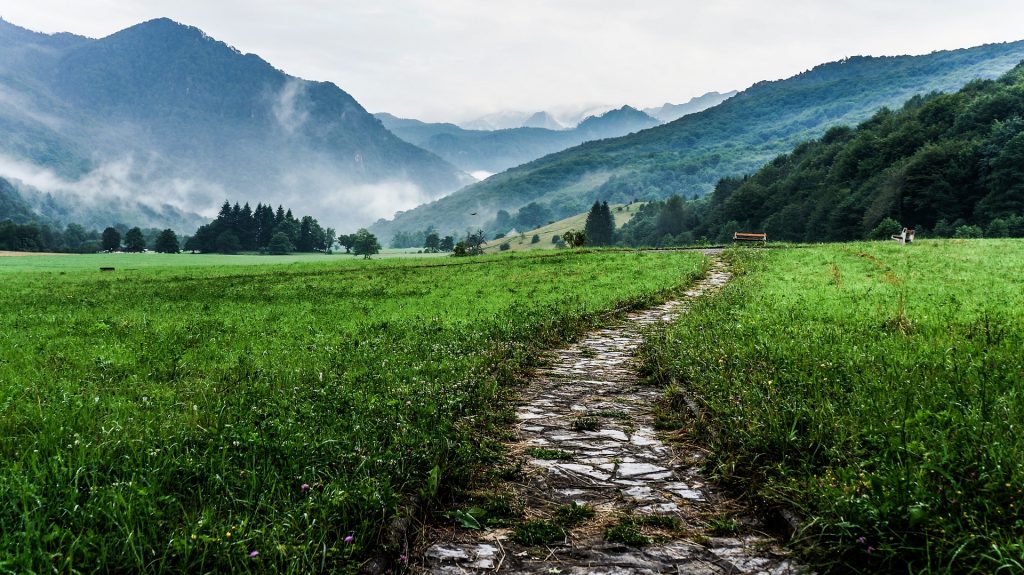
Find out more and take a Journey…
Sometimes, it feels as though life doesn’t quite flow as smoothly as it could, or patterns of behaviour and experience often repeat themselves. The Shamanic Journey offers a way to gain insight into your path, your future plans and how to find balance.
The Journey is a meditation to the beat of the shamanic drum; the sound waves taking the mind to a place of relaxation and vision not usually accessible to the logical, conscious mind. Allow your logical, thinking mind to rest as your brainwaves adjust to the drumbeat and a new realm of the subconscious mind reveals itself to you.
Understand how to live with nature and all beings with more ease; flowing through life rather than resisting it. Appreciate the fullness of life and all that it has to offer when we understand our place in the universe.
Next Shamanic Journey Meditation Workshop is Friday 1st November 6 pm – 8 pm at TopLine Studio.
Men’s Wellbeing Series
The importance of men’s wellbeing can’t be stressed enough in a time when we hear frightening statistics about mental health, and about how men in particular tend to suffer with the stresses and strains of modern life. Men are much less likely to seek help for mental health issues, workplace stress or anxiety from life in general.
The Men’s Wellbeing Series aims to provide men with an opportunity to try wellbeing activities designed specifically for men, in a community space which aims to promote sharing and openness. This is an opportunity to invest in your health and wellbeing and learn techniques to calm the mind and release stress and tension from the body. Whether you suffer with the pressures of life already, or want to get a handle on your wellbeing before your health is affected, these workshops will provide valuable tools to help you take back control of your mental and physical wellbeing.
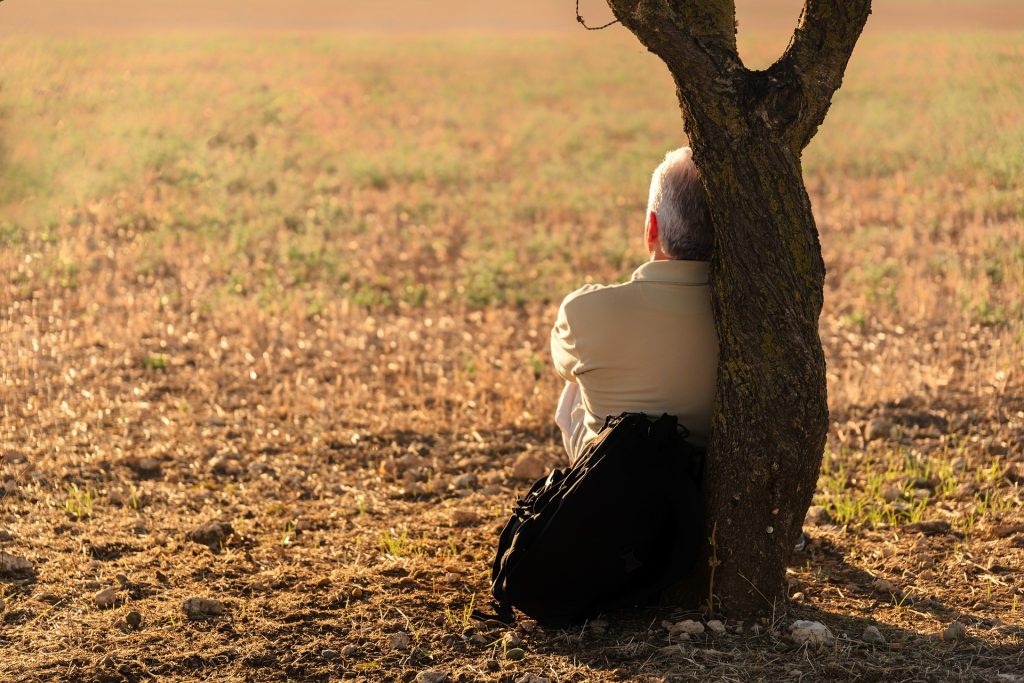
There are two options for men to try in this series, and no experience is necessary for either workshop. Each workshop can be booked individually (no need to do both) so you can choose both, or the one that appeals the most. To kickstart the Men’s Wellbeing Series, each workshop is offered at £5 off the usual investment.
The Workshops
Yoga for Mind and Body
Wednesday 26th June 2019, 6 pm – 7.30 pm, £15
A truly beneficial workshop for mind and body to help you unwind, de-stress, stretch and relax.
This workshop is a great place to start your yoga practice. The session will include dynamic movements for flexibility and strength and restorative, longer holds to encourage joint mobility and mindful movement. There will be guided relaxation and meditation included.
To find out more, or book your place – visit the Events page.
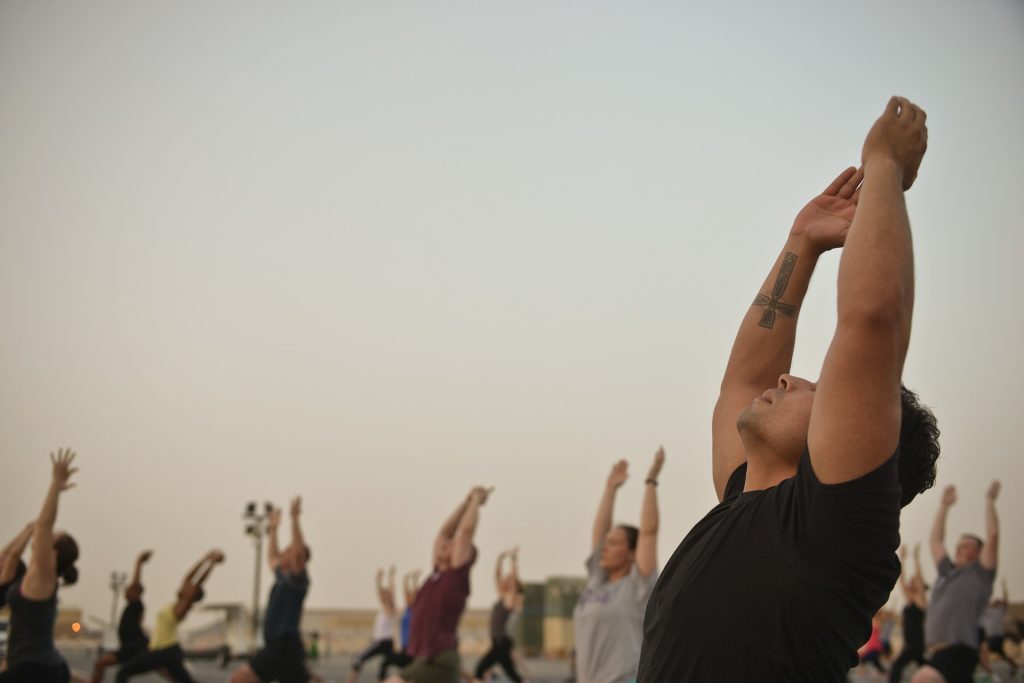
Introduction to Mindfulness
Tuesday 9th July 2019, 6 pm – 7.30 pm, £20
A fantastic introduction to mindfulness that will give you the opportunity to try practices and learn how mindfulness can help to calm the busyness of the mind.
The workshop will cover: what mindfulness is, how to connect with the present moment through awareness, using mindfulness to calm the busyness of the mind, using mindfulness in daily life and in stressful situations. Participants will try different mindfulness meditations which can be practiced during and after the session.
To find out more, or book your place – visit the Events page.
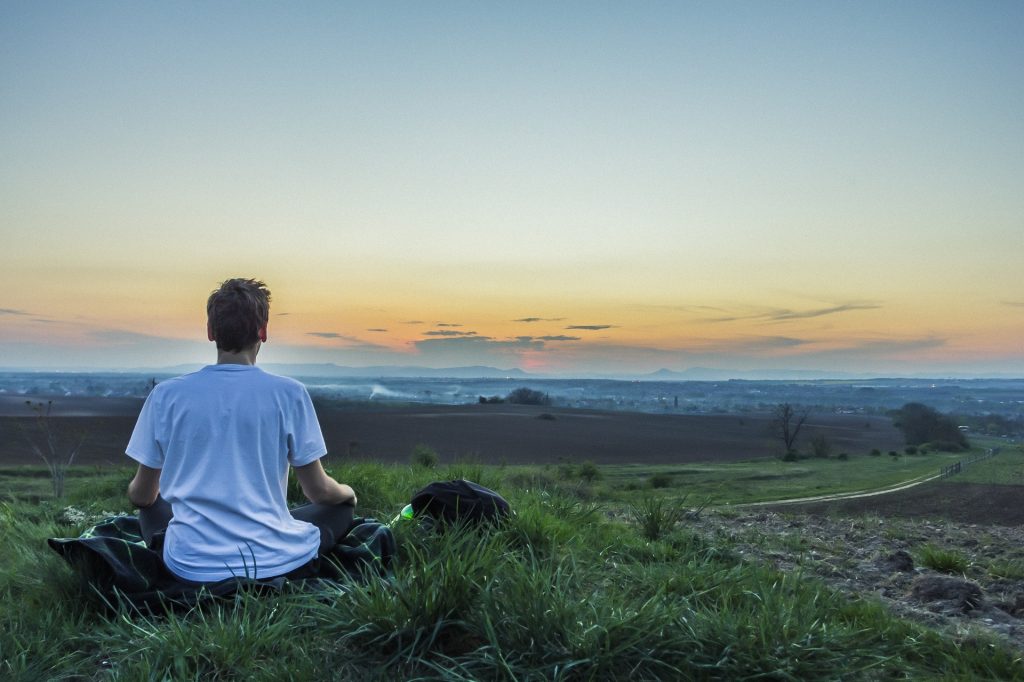
The Venue
The Workshops will be held at a great new community space above Candid Beer in Stafford town centre.
Candid is a craft beer bottleshop/taproom/coffeeshop/co-working space and events hub rolled into one. Community and conversation are central at Candid.
See you there!
World Meditation Day 2019
Tuesday 21st May 2019 is World Meditation Day! I wrote recently about the benefits of a Mindfulness or Meditation practice and the difficulties of getting started.
When we are presented with an opportunity like World Meditation Day, there really is no better time to get started on the meditation journey.

Meditation is for everybody
So what can you expect as a beginner? The good news is, absolutely everybody and anybody can meditate. It seems difficult because we hear phrases like ’empty your mind of thoughts’ and immediately we have fear that we won’t be able to do it. Luckily that’s not what meditation and mindfulness are about. If we could empty our minds, we wouldn’t need to meditate! Don’t be put off by popular phrases and preconceptions; come with no expectations and you’ll find your meditation experience all the better for it.
So what will you find at group meditation with the Well Nest? A warm and friendly welcome, a calm atmosphere in relaxing surroundings, full instructions from start to finish, knowledgeable insights and teachings and guidance through your meditation experience. At the Well Nest, we love beginners – because we remember how it feels to attend that very first group meditation session and feel like a fish out of water. But don’t worry, meditation really is for everybody. We will sit in chairs (no special clothing required) and enjoy teachings, progressive relaxation and meditation.
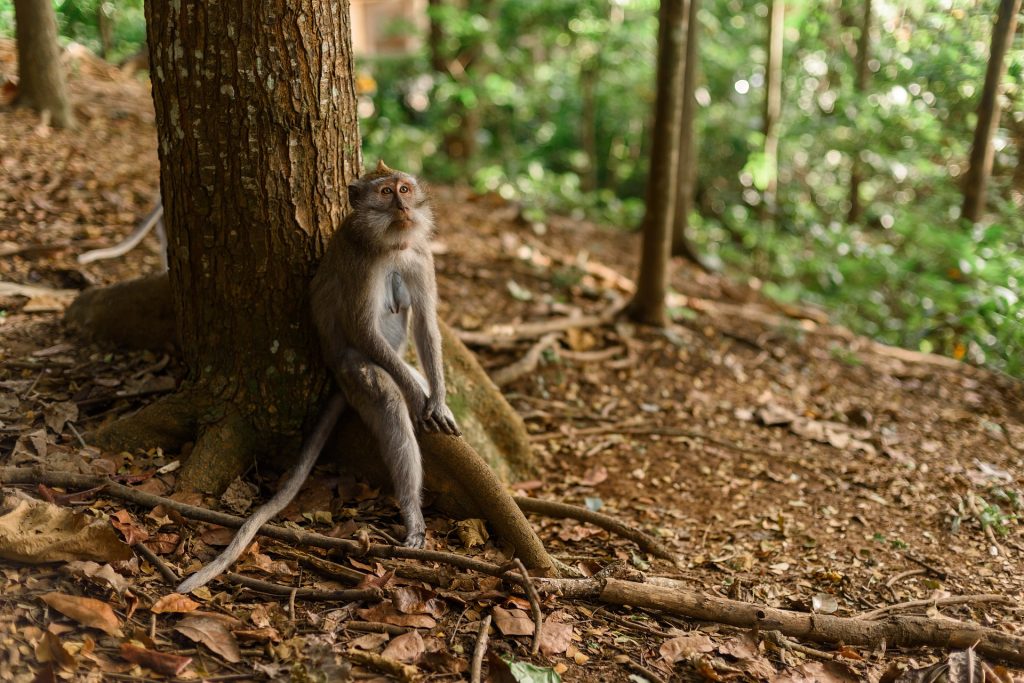
Join us…
Come and join us on World Meditation Day as we hold a Lunchtime Escape in Stafford town centre. At 12.30 pm at TopLine Studio, I will help you find 45 minutes of calm in the middle of your day. This is a great opportunity to try something that could really make a difference to your life and those close to you.
If sitting doesn’t appeal to you, why not try walking meditation. Learn to tune into the body and your surroundings in a whole new way: mindful walking classes are available at The Wolseley Centre. Spend your Saturday mornings wisely and invest in you.
You can read more about my Mindfulness and Meditation journey here. Isn’t it about time you gave meditation a try?
May is National Meditation Month
We hear about Mindfulness and Meditation all the time; on social media, in the news, at the doctors surgery and in the workplace…but where do you start if you haven’t tried it before?
Meditation and Mindfulness are founded on some of the simplest practices that have been relied upon for centuries by cultures that truly understood the real benefits of a meditation practice.
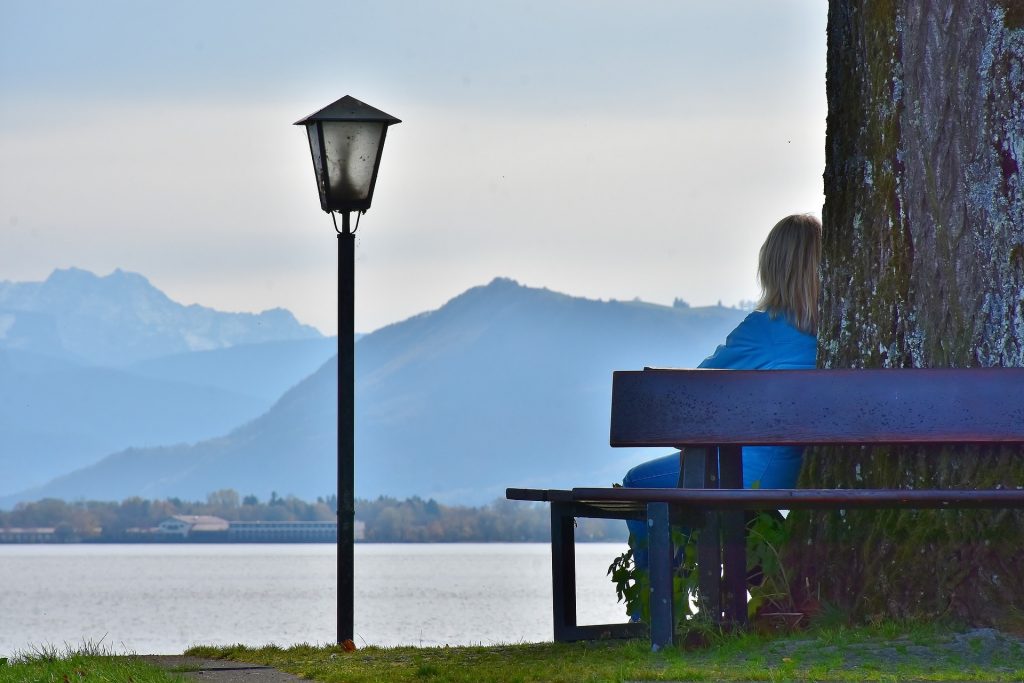
Although some of the practices are very simple, they can be very difficult. It’s understandable that most people read articles and think “I should learn to meditate” or “I know I’d benefit from mindfulness” but many don’t actually take the plunge. Part of that is availability, part of it is knowing where to start (what to try?) and what the experience might be in a class or group meditation.
Why not start with The Well Nest?
At the Well Nest we run Mindfulness & Meditation sessions through the week , evening sessions, courses and workshops in relaxed and welcoming environments. No experience is necessary; just come with an open mind and a willingness to learn a practice that could change your life. At the Well Nest we focus on delivering simple and effective teachings and practical meditations that you can take away and practice in daily life, right from the first session.
You are welcome to start your journey with us this month as we launch new Lunchtime Escapes in Stafford – 45 minutes of Mindfulness and Meditation on Tuesdays and Thursdays at the new TopLine Studio on Stafford Street. An opportunity to try something new that could last life time and make a real difference to your quality of life. Or, why not join us to learn the art of Mindful Walking in the beautiful surrounds of the Wolseley Centre on 25th May.
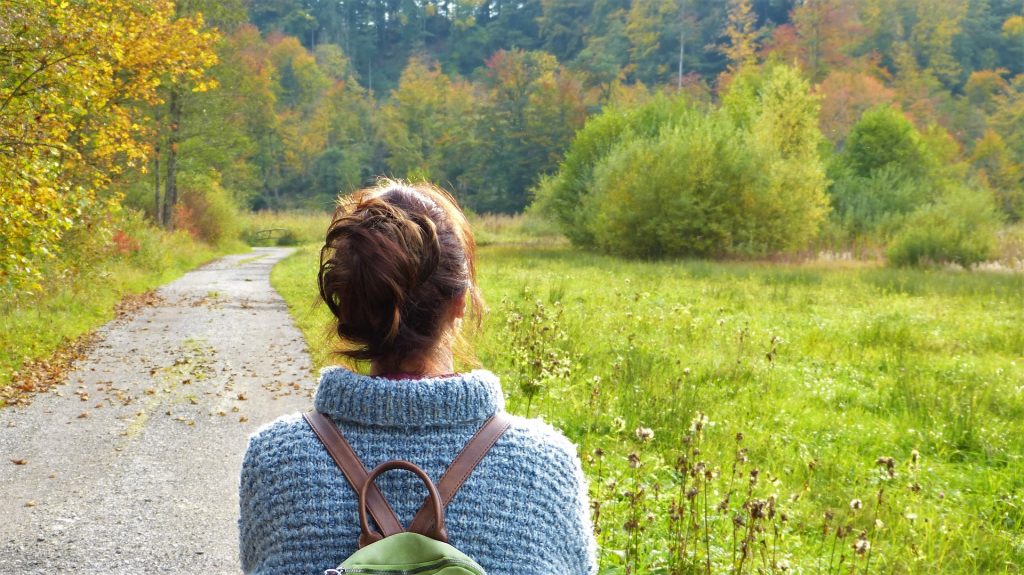
The benefits of a Mindfulness & Meditation practice
The benefits of a regular meditation or Mindfulness practice are well documented: here are just a few…
- lower stress levels
- reduced anxiety
- better sleep quality
- improved mental resilience and overall mood
- better overall wellbeing
- less instances of heart disease
- less instances of respiratory illness
- Improved blood pressure
- Improved relationships….
It’s time to make this May, your meditation month. Join us and learn a practice that could truly benefit your life and free your mind.
Yin Yoga and Mindful Movement
Mindful movement provides a combination of physical and mental benefits that can connect the individual with the present moment and help develop a greater appreciation of how the body feels and moves.
Yin Yoga is the practice of holding yoga postures (asana) for extended periods of time providing stretching of the connective tissues and release of the energy flows within the body. Through long holds and conscious relaxation of certain muscle groups, participants are brought into deep focus in the present moment. Using mindfulness techniques participants learn to feel the true experience of the body in the moment. This combination of physical and mental practice makes Yin Yoga a deeply relaxing and balancing practice.
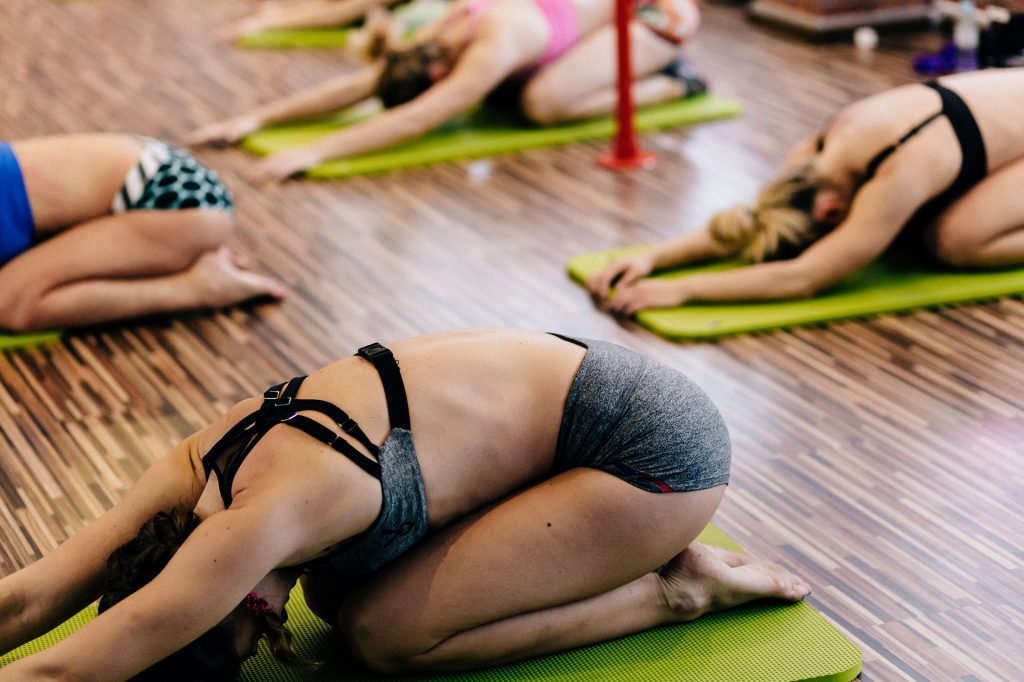
The practice of Yin Yoga is not the dynamic flowing yoga often seen on social media, but is instead a gentle series of asana combined with breathing and focus on the direct sensations in the body. Over time, joints become more fluid as the connective tissues (fascia) in the body begin to loosen. The muscles, tendons and supporting tissues of the joints gradually become more supple allowing greater movement and flexibility.
Yin Yoga is based on the principles of Taoist Yoga and the flow of Chi (energy) through channels in the body. By spending several minutes in each asana, individuals may start to feel the release and flow of energy in the body. Focusing on the momentary experience of these sensations in the body is a mindfulness practice that allows individuals to connect more deeply with the moment and with themselves. Combined with breathing practices and meditative relaxation, Yin Yoga is a holistic approach to mind/body wellness.
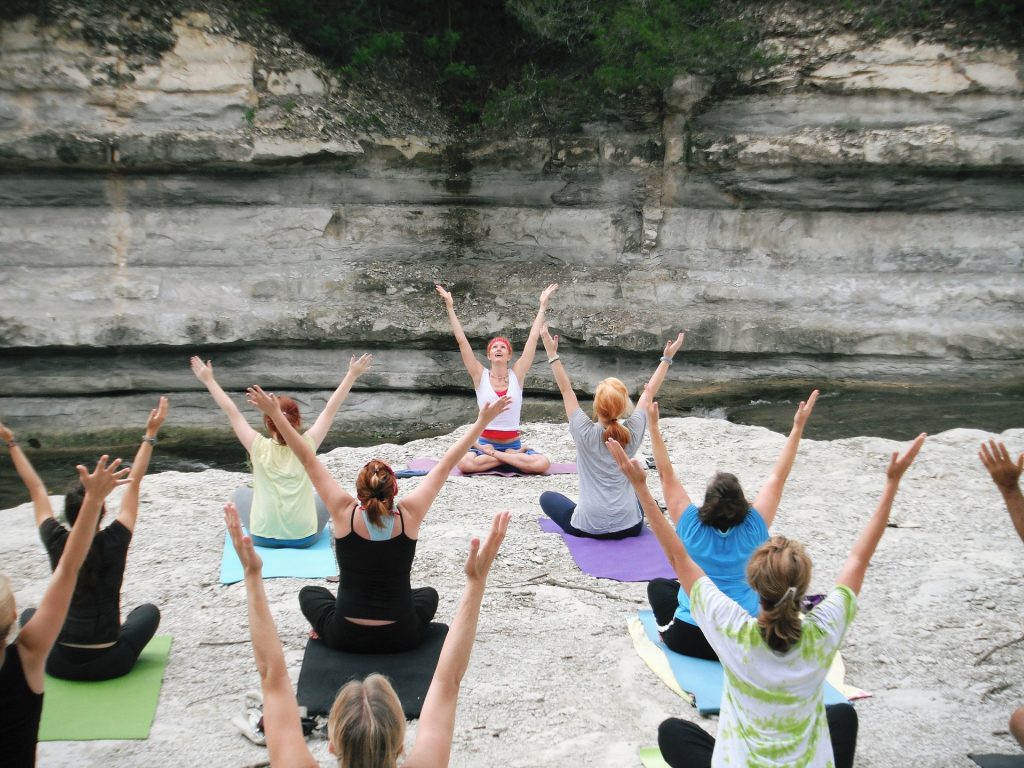
Yin yoga is a great lesson in surrendering to the present moment and the sensations of the body. The practice of holding asana leads to a breakdown of mental barriers that naturally steer us away from discomfort. Feeling into poses is a great release for the mind as the bodily sensations take over. This is beneficial for reducing stress, anxiety and low mood and can allow a deeper sense of relaxation which helps with sleep and improvement in general wellbeing.
Sign up via the events pages for upcoming Yin Yoga workshops to experience the effects of the practice for yourself.
Yin Yoga and Mindful Movement Workshop – By Candlelight Friday 5th April 2019, 6.30 pm – 8 pm
Regular Yin Yoga classes with The Well Nest are coming soon!
Namaste
